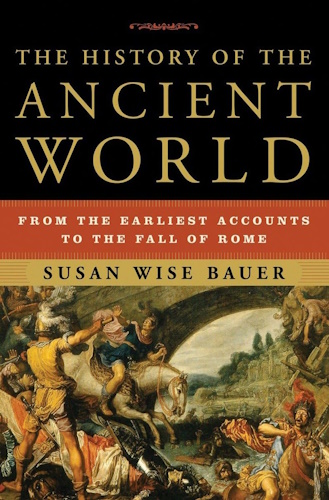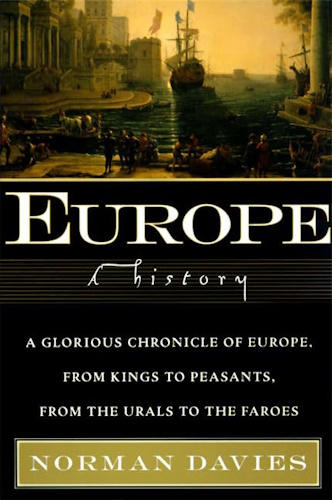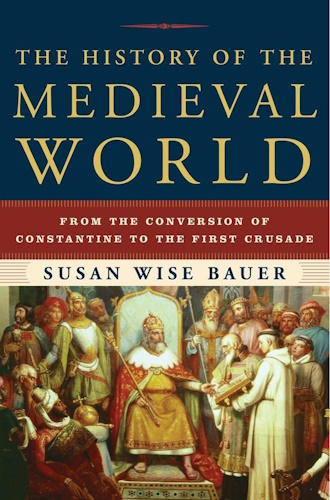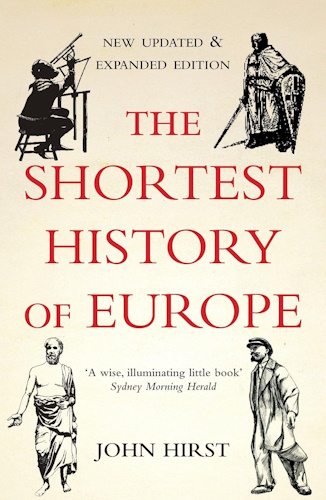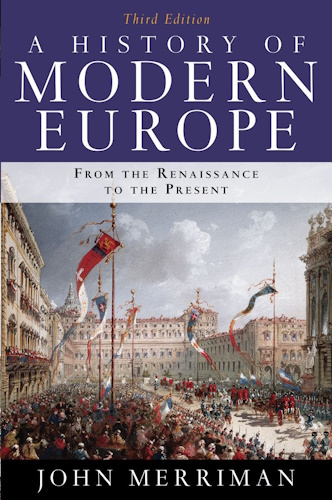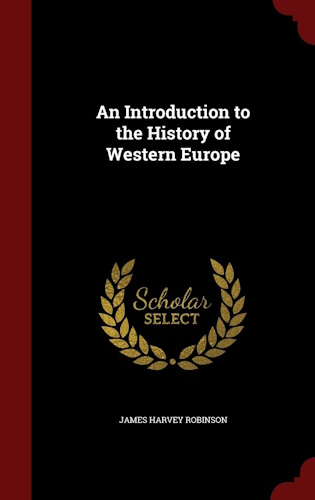![]()
The Importance of Questioning History: From Malta to the Dead Sea Scrolls
by
Gloria Moss
30 JANUARY, 2020
![]()

According to George Orwell, Sir Walter Raleigh stopped writing his History of the World after he was unable to identify the cause of the scuffle and murder that took place outside his cell in the Tower of London . A favorite of Queen Elizabeth I and a leading intellectual, this reaction singled him out from many future historians.
For example, the renowned Oxford philosopher, historian and archaeologist R G Collingwood (1889-1943), viewed people as driven by reason rather than emotion, assumptions that bedeviled classical economists until behavioral economists challenged their models in the 1970s. Should we now be returning to Raleigh's skepticism as a historian and viewing history through the lens of those who write it? We will take two cases of distant history - prehistoric Malta and the Dead Sea Scrolls site of Qumran – and see how interpretations may have been influenced by the personalities of the archaeologists involved and show the importance of questioning history.
1. Prehistoric Malta
The Maltese archipelago lies about 90km to the south of the south-eastern tip of Sicily to which it is thought it may originally have been linked until about 5 million years ago. Then, tectonic activity resulted in a re-opening of the Gibraltar Straits filling up the Mediterranean and isolating the Maltese Islands area from the mainland. Even today, the sea between the Maltese Islands and Sicily is mostly less than 90m in depth.

(Image courtesy of Lenie Reedijk - Ancient Origins)
So, Sicily may have been the land of origin of Malta's first colonizers, millions of years ago. It may then, arguably, have been home to peoples who lived there and created a temple culture in Paleolithic times, a period spanning 40,000 to 10,000 years before our time. The evidence for this dating comes from teeth found near Ghar Dalam in 1918 (Keith, 1918 and 1924; Mifsud and Mifsud, 1997) as well as a temple system aligned to the constellation of Sirius, whose movements can be accurately documented (Reedijk, 2018). Despite this, official history of Malta is focused on a temple culture beginning in at least 5,000 years later, in 4,000-3,000 BC.

suggesting evidence of Paleolithic humans in Malta.
(Giuseppe Despott / Sir Arthur Keith)
Sir Arthur Evans
One of the people said to be responsible for the later dating of Malta was the British archaeologist, Sir Arthur Evans, the archaeologist of Knossos. According to a recent account of Maltese prehistory (Reedjik, 2018), Evans maintained that Knossos was the Bronze Age cradle of European civilization and this thinking not only marginalized the considerable evidence of Neolithic inhabitation but also skewed the thinking of generations of archaeologists.
You might say that vested interests were at work since Evans had purchased the land at Knossos and created huge reconstructions of Bronze Age palaces. This investment paid off since the site is the second most popular tourist attraction in all of Greece after the Acropolis but the ethics of combining the roles of archaeologist and business owner role must be considered problematic, particularly in view of descriptions of the reconstructions as 'inaccurate' and 'damaging' (German, https://tinyurl.com/vmn7dc2).

How did Evans achieve his influence? Whilst a modern history undergraduate at Oxford, he showed himself unable in his finals to answer a single question about the twelfth century or beyond, and it was just the intervention of an examiner, Edward Augustus Freeman, that produced a first class degree classification. Then, four years later, in 1878, Arthur married Freeman's eldest daughter and six years later, he was appointed Keeper of the Ashmolean Museum in Oxford, with no apparently relevant experience. It was in the same year, 1884, that he used family money to buy the site of Knossos, branding it as the Bronze Age cradle of European civilization.
Malta at this time was a British colony and no sensible archaeologist would suggest an earlier date for Malta's monuments than those given to Knossos by Evans (Reedjik, ibid). There were two people who argued for a Paleolithic past for Malta. One was the respected archaeologist, Themistocles Zammit but he died in 1935, and the other, a talented Italian archaeologist, Ugolini but he died in 1936 at the young age of 41. So, with these two influential archaeologists out of the way, "no independent, non-British archaeologist was ever allowed to take the lead in excavating or interpreting a Maltese prehistoric temple site" (Reedjik, p.49).
Did Giants Exists?
If discussion of a Paleolithic has become the kiss of death to an aspiring archaeologist, so too is discussion of giants. This is despite the somewhat abundant evidence of their earlier existence on the islands.
What form does this evidence take? In terms of documentary evidence, a printed account of the Maltese Islands published in Lyon in 1536, written by Jean Quintin d'Autun (auditor to Grandmaster Philippe Vilier de L'Isle Adam) spoke of an antediluvian race of giants who lived there. Then, in 1647, we have an account from Abela of the ancient habitation of the Cyclops in Malta, citing burial places "often of enormous size" (e.g. between Madonna della Gratia and the Tower of Blata el Baidha, and another near Zurrico) and the "gigantic bones found in Malta" (one used as a cross-bar for a door) as well as teeth "the thickness of a finger."
In terms of the temples, Gozo's Ggantija, a site meaning 'Giant's Place/ Lair' in Maltese, or 'belonging to the giant' reflects the popular connotations these sites possessed. Since some of the stones weighed more than 50 tons, it is not unreasonable to assume the involvement of giant in the construction of this temple.

Beyond this evidence, there are statues with six fingers or six toes, features identified in the Old Testament with giants or sons of giants (see 2 Samuel 21:20 and I Chronicles XX:4). Then, there is the evidence of the elongated skulls, with 44 investigated by Professor Anton Mifsud and 95.5% declared to be longheaded. He also stated that a local workman in Gozo shared how he had found a giant while excavating the foundations of a building complex. The laborer had hidden the bones so that he would not be stopped by the authorities from continuing his work and from the evidence he showed Mifsud, it seems that between 4000 and 6000 years ago a man, 2.64 meters tall, was buried upright in the soil.
What is more, in the mid 1930s, a lady working for the British Embassy in Malta, Lois Jessop, wrote of how she saw creatures "of giant stature," about twenty to twenty-five feet high, in the lower level of the Hypogeum in Malta.
Despite this abundance of evidence, Nicholas Vella, currently a Professor at the University of Malta has alluded to the fact that "new paleontological discoveries poured cold water on the evidence for giants" but the nature of this evidence is ignored. We do know that much of the evidence for giants has been removed from the Smithsonian Museum under the influence of Major John Wesley Powell, the Director of the Smithsonian Bureau of Ethnology from 1879 to 1902 and propounder of Evolution theory - and the removal of the elongated skulls from the Valletta archaeological museum, together with orders to clean away a six-digit hand print from an ancient monument in Malta, are perhaps parallel occurrences.
In the same way, we read that orders were given for the handprint to be effaced from the cave wall. If you read Gary Wayne's book, The Genesis 6 Conspiracy, you will see the view that a Biblical race of giants spawned a giant/human hybrid race, the Nephilim, who still rule over us today. Could removal of all reference to giants be an attempt to divert attention from the role played by this group in society today?

Our Malta study tour on 19-23 June (see banner below) will be putting the spotlight on this and other questions with tours of key sites and talks by speakers on Maltese prehistory, hollow earth and giants, and the Knights of Malta and the Maltese Cross.
2.Dead Sea Scrolls site of Qumran
One of World's Most Controversial Sites
In 1946, a Bedouin shepherd and two others discovered the Dead Sea Scrolls in caves near the site of Qumran. This was fêted as one of the more important finds in the history of modern archaeology (Encyclopedia Britannica) and what we know about the site relies extensively on the excavations of Qumran took place over a period of six seasons (1951–1956) under the direction of Roland de Vaux, head of the Ecole Biblique in Jerusalem.
This community of Dominican friars was established to "renew biblical studies at a time when modern criticism (history, philology, etc.) was challenging the traditional understanding of the sacred text and unsettling the faith of many Christians" (see https://www.ebaf.edu/ecole-biblique/the-ecole-biblique-et-archeologique-today/) and De Vaux was put in charge despite not being an archaeologist, and having only learned about archaeology from his contact with archaeologists.

Doubts Concerning De Vaux
Was he best placed to be put in charge of excavations of this highly important site? Three factors suggest not. Firstly, the interpretation of the site assumes a monastic function to the site, with the designation of areas of the site – for example the 'refectory', the 'scriptorium' – mirroring the wording and functions of a monastic community. So, the assumption that the site was home to an ascetic, pre-Christian Jewish sect may be a projection of De Vaux's own monastic inclinations. Then, his lack of archaeological training may explain why one third of the coin evidence from the site has gone missing, something that undermines attempts to date the site.
Finally, when Pauline Donceel-Voûte, Professor of Archaeology and History at the Catholic University of Louvain, was asked to re-examine finds against De Vaux's original inventory, she found many objects, which had not been noted down there. Could this have been because these appeared to sit ill with the interpretation of Qumran as a site for an ascetic sect? For she found stoppers with tubular orifices (suitable for aerating or testing a substance at regular intervals) as well as a number of glass containers and juglets. Some of the juglets were described as containers for balsam (Donceel-Voûte, 1994a).
This is extraordinary. Balsam was one of the most precious substances of the day, worth twice as much as silver and considered "a sovereign remedy for headache, incipient cataract and dimness of vision" (Strabo of Amaseia). It is possible that the tight neck of the juglets, allowing only a few drops through at a time, would have ensured that this precious substance was not squandered. What is more, it may have been cultivated at Qumran since its inhabitants, the Essenes, "were expert in the sowing of seeds and the cultivation of plants," employing people to "collect the revenue and gather the various products of the soil" (Dupont-Sommer, 1961). They may then have been processed in the shallow pools, all part of a manufacturing process, according to Donceel-Voûte that "took place in a remarkably neat, hygienic environment" (1994b).
Anomalies in the Cemetery
Donceel-Voûte used this evidence to argue that Qumran was the site of a luxury villa. However, other facts about the site sit ill with this interpretation. For example, although the site is small, there are no fewer than four adjoining cemeteries, the largest, in the east, containing 1,100 grave plots, some with two corpses. Even if we were to assume that the site was home to the Essenes, this would be an excessive number since scholars have assumed the community to consist of a maximum of 200 people living, according to Josephus to advanced age in a period spanning 200 years. Moreover, of the forty-seven skeletons exhumed, only seven (15%) were aged over forty, a fact that fits ill with the exceptional longevity of the community.
Moreover, quite apart from the surprisingly large number of grave plots, the reports of these exhumations indicated attributed diverse ethnic origins and occupations to those buried (it is thought that they were laborers, horsemen and scribes) and this diversity is not consistent with our knowledge of the Essenes. What is more, the bone marrow, teeth and base of the cranium had all been impregnated with madder dye (Moss, 1998). The dye could not have leached from clothing since madder has outstanding fastness properties and, in attaching to bones, was probably ingested. Since according to a contemporary herbalist, Dioscorides, madder was a powerful diuretic and Pliny supposed it to be effective against jaundice, sciatica and paralysis in conjunction with daily baths ( ibid), it may have been ingested for medicinal reasons. Note that the main feature greeting the visitor to Qumran will be struck by the number of large baths present.
The Tower at the Site's Entrance
Another anachronism with Donceel-Voûte's interpretation is the presence of a commanding tower at the entrance to the site. The walls are four to five feet thick and its rooms communicate with each internally but not externally. Perhaps it was storing precious commodities such as balsam since a similar tower at En Gedi, further south, was interpreted as being used to store precious aromatics (Hirshfield, 1996). This interpretation would be consistent with the recording of immense treasures in the Copper Scroll , content that has been dismissed by Biblical scholars as pure fantasy.

What does this all mean? Qumran was being run as a medical center visited by throngs of sick people seeking cures (Moss, 1998; 2000a; 2000b; 2010). This theory fits the evidence more convincingly than many other theories emerging from Biblical mainstream academics.
Questioning Historians and Archaeologists
If economics has been transformed by an understanding of the role played by psychology in economic behavior, so too must our understanding of the role that psychology plays in shaping historical narratives. Our focus has been on pre-historic and ancient history but the words of a modern historian, Gerry Docherty, are nonetheless applicable. According to him, "universities promote their version of history with lecturers and professors repeating the accepted story. Then history graduates, fresh with their new degrees, take it into the classroom, and examination boards award only the students who regurgitate the approved learning." The lessons are clear. "We, the general public, are continually lied to. We are. We have been today. We will be tomorrow, unless we begin to question for ourselves."
It becomes our duty therefore to question the past and to usher in a new behavioral approach to the study of history, mirroring the sea-change achieved in the field of economics. We can do this through re-writing histories and also running 'Questioning History' events that bring a sharp, evidence-based approach to events and history. So, join us for our study tour to Malta (19-23 June 2020 – see details below) and our next Questioning History weekend on 12-13 December just outside London.
This questioning will lead us to the place spoken of in a Balzac novel where "there are two histories: official history, lying, and then secret history, where you find the real causes of events." Moreover, since, "who controls the past, controls the future: who controls the present, controls the past" - chilling words from Winston in Orwell's 1984 – we will change our understanding of the present.
Top image: History through a lens – the importance of questioning history. Source: Valentyna / Adobe stock
By Gloria Moss
Prof Gloria Moss PhD FCIPD has published extensively on ancient history and is running 'Questioning History' events. The next study tour is to Malta (see below) and she will be hosting a second 'Questioning History' event on 12-13 December 2020 in a venue close to London. For information, see www.learningholidays.webs.com
References:
Chatterton, K. (1932), Big Blockade , London, Hutchinson and Co
Docherty, G and J. MacDonald (2013), Hidden History: the secret origins of the First World War, Edinburgh and London, Mainstream publishing
Donceel-Voûte, P. (1994a), Les ruines de Qumran reinterpretées, Archaeologia, 298, 25-35
Donceel-Voûte, P. (1994b), Archaeology of Qumran, Annals of the New York Academy of Sciences, 722, 1-38
Dupont-Sommer, A. (1961), The Essene writings from Qumran. Translation by G Vermez, Oxford: Basil Blackwell
Hirshfield, (1996), The balm of Gilead, BAR, September/ October, 18-19
Keith, A. (1918), Keith, A., Letter to Nature, July 25, 1918: 204
Keith, A., 1924. Neanderthal Man in Malta, in Journal of the Royal Anthropological Institute , 56, pp. 251-260
Mifsud, A. and Mifsud, S. (1997), Dossier Malta Evidence for the Magdalenian, Proprint CO Ltd, Malta
Moss, G. (1998), Religion and medicine: the case of Qumran, Faith and Freedom, 51 (146), 44-61
Moss, G. (2000a), Medicine 2000 years ago: the case of Qumran and other biblical sites, 120 (4), 255-261
Moss, G. (2000b), Qumran cover-up, The Fortean Times, 131, March, 40-44
Moss, G. (2010), Water and health: A forgotten connection? The Journal of the Royal Society for the Promotion of Health, 130 (5) 227-232
Reedjik, L. (2018), Sirius: the star of the Maltese Temples, Netherlands, Malet Books
Taylor, J, (2015), The Essenes, the Scrolls and the Dead Sea, Oxford University Press, Oxford
Vella, N. (2007), From Cabiri to goddesses: cult, ritual and context in the formative years of Maltese archaeology, 61-71, In Cult in context : reconsidering ritual in archaeology / edited by David A. Barrowclough and Caroline Malone. Oxford: Oxbow Books Accessed on 17 January 2020
![]()
![]()
Disclaimer:
Some material presented will contain links, quotes, ideologies, etc., the contents of which should be understood to first, in their whole, reflect the views or opinions of their editors, and second, are used in my personal research as "fair use" sources only, and not espousement one way or the other. Researching for 'truth' leads one all over the place...a piece here, a piece there. As a researcher, I hunt, gather and disassemble resources, trying to put all the pieces into a coherent and logical whole. I encourage you to do the same. And please remember, these pages are only my effort to collect all the pieces I can find and see if they properly fit into the 'reality aggregate'.
Personal Position:
I've come to realize that 'truth' boils down to what we 'believe' the facts we've gathered point to. We only 'know' what we've 'experienced' firsthand. Everything else - what we read, what we watch, what we hear - is what someone else's gathered facts point to and 'they' 'believe' is 'truth', so that 'truth' seems to change in direct proportion to newly gathered facts divided by applied plausibility. Though I believe there is 'truth', until someone representing the celestial realm visibly appears and presents the heavenly records of Facts And Lies In The Order They Happened, I can't know for sure exactly what "the whole truth' on any given subject is, and what applies to me applies to everyone. Until then I'll continue to ask, "what does The Urantia Book say on the subject?"
~Gail Bird Allen
![]()
![]()

